Growing Beets in Containers: Unlock the secrets to a vibrant, homegrown harvest, even without a sprawling garden! Have you ever dreamt of plucking fresh, earthy beets straight from your own patio? I know I have! It’s easier than you think, and this guide is packed with DIY tricks to make it a reality.
Beets have a rich history, dating back to ancient times where their leafy greens were prized more than the root itself. Over centuries, beets have evolved into the colorful, nutritious powerhouse we know and love today. From the vibrant borscht of Eastern Europe to the sweet roasted beets gracing modern tables, this humble root vegetable has truly stood the test of time.
But why bother growing beets in containers? Well, for starters, it’s incredibly space-efficient, perfect for apartment dwellers or anyone with limited garden space. Plus, container gardening gives you greater control over soil quality and watering, leading to healthier, more abundant harvests. Imagine the satisfaction of serving a salad featuring beets you nurtured from seed to table! This DIY guide will provide you with simple, effective hacks to avoid common pitfalls and maximize your beet-growing success. So, let’s get our hands dirty and embark on this rewarding gardening adventure together!
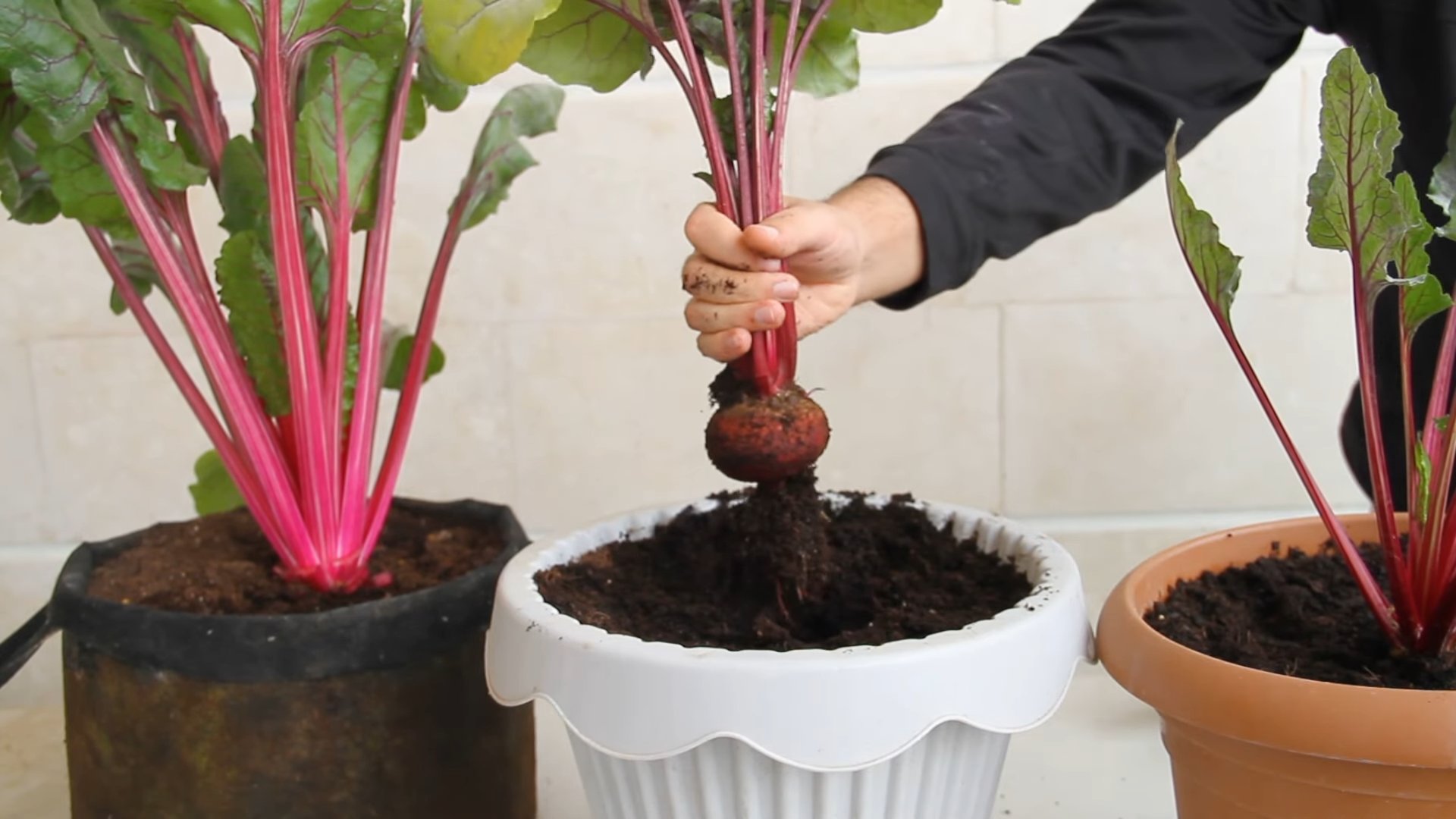
Growing Beets in Containers: A Beginner’s Guide
Hey there, fellow gardening enthusiasts! I’m so excited to share my experience with growing beets in containers. It’s surprisingly easy and rewarding, even if you don’t have a sprawling backyard. Beets are packed with nutrients, delicious, and their vibrant colors add a touch of beauty to any patio or balcony. Let’s dive into how you can grow your own bountiful beet harvest in containers!
Choosing the Right Container and Soil
Before we get our hands dirty, let’s talk about the essentials: the container and the soil. These are crucial for healthy beet growth.
* Container Size: Beets need room to grow, especially their roots. I recommend a container that’s at least 12 inches deep and 12 inches in diameter. This will give the beets enough space to develop properly. You can use individual pots for each plant or a larger container to grow several beets together.
* Drainage: Excellent drainage is a must! Beets don’t like soggy soil. Make sure your container has drainage holes at the bottom to allow excess water to escape.
* Material: The container material is up to you. Plastic, terracotta, or even fabric pots work well. Just keep in mind that terracotta pots dry out faster than plastic ones, so you might need to water more frequently.
* Soil: Forget about using garden soil straight from the ground. It’s often too heavy and doesn’t drain well in containers. Instead, opt for a high-quality potting mix. I prefer a mix that’s specifically formulated for vegetables, as it usually contains the right balance of nutrients. You can also amend your potting mix with compost for added fertility and drainage.
Selecting Beet Varieties
Choosing the right beet variety is important for container gardening. Some varieties are better suited for smaller spaces than others.
* Consider Size: Look for beet varieties that are known for their smaller size and faster maturity. ‘Early Wonder’, ‘Detroit Dark Red’, and ‘Baby Beet’ are all excellent choices for container growing.
* Color Variety: Don’t be afraid to experiment with different colors! Besides the classic red beets, you can also find golden beets (‘Golden Detroit’) and even striped beets (‘Chioggia’). They’ll add a splash of color to your garden and your plate.
* Leafy Greens: Remember that beet greens are also edible and delicious! Some varieties are specifically bred for their flavorful greens, so keep that in mind when making your selection.
Planting Your Beet Seeds
Now for the fun part: planting the seeds!
1. Prepare the Soil: Fill your container with the potting mix, leaving about an inch or two of space at the top. Gently pat down the soil to remove any air pockets.
2. Sow the Seeds: Beet seeds are actually clusters of seeds, so you’ll likely get multiple seedlings from each seed cluster. Sow the seeds about 1 inch deep and 2-3 inches apart. If you’re using a larger container, you can space the rows about 4-6 inches apart.
3. Cover and Water: Cover the seeds with a thin layer of soil and gently water the container until the soil is evenly moist. Avoid overwatering, as this can cause the seeds to rot.
4. Germination: Keep the soil consistently moist during germination. You should see seedlings emerge in about 5-10 days, depending on the temperature.
Thinning the Seedlings
As I mentioned earlier, beet seeds are actually clusters of seeds, so you’ll likely get multiple seedlings sprouting from each seed cluster. This means you’ll need to thin them out to give the remaining seedlings enough space to grow.
1. Wait Until True Leaves Appear: Wait until the seedlings have developed their first set of true leaves (the leaves that look like miniature beet greens) before thinning.
2. Thin to One Seedling Per Spot: Carefully snip off the weaker seedlings at the soil line, leaving only one strong seedling per spot. Don’t pull them out, as this can disturb the roots of the remaining seedlings.
3. Space Appropriately: Aim for a final spacing of about 3-4 inches between each beet plant. This will give them enough room to develop nice, round roots.
Caring for Your Beet Plants
Once your seedlings are thinned, it’s time to focus on providing them with the care they need to thrive.
* Sunlight: Beets need at least 6 hours of sunlight per day. Place your container in a sunny spot where it will receive plenty of direct sunlight.
* Watering: Water your beet plants regularly, especially during hot, dry weather. The soil should be consistently moist, but not soggy. Check the soil moisture by sticking your finger into the soil. If the top inch feels dry, it’s time to water.
* Fertilizing: Beets are heavy feeders, so they benefit from regular fertilization. I like to use a balanced liquid fertilizer diluted to half strength every 2-3 weeks. You can also amend the soil with compost or aged manure at planting time.
* Weeding: Keep your container free of weeds. Weeds compete with your beet plants for nutrients and water. Gently pull out any weeds that appear, being careful not to disturb the beet roots.
* Mulching: Applying a layer of mulch around your beet plants can help to retain moisture, suppress weeds, and regulate soil temperature. I like to use straw or shredded leaves as mulch.
Dealing with Pests and Diseases
Beets are generally pretty resistant to pests and diseases, but there are a few things to watch out for.
* Leaf Miners: Leaf miners are small insects that tunnel through the leaves of beet plants, leaving unsightly trails. You can control leaf miners by removing and destroying infested leaves. You can also use insecticidal soap or neem oil.
* Flea Beetles: Flea beetles are tiny jumping insects that can chew small holes in the leaves of beet plants. You can control flea beetles by covering your plants with row covers or by using insecticidal soap or neem oil.
* Root Rot: Root rot is a fungal disease that can cause the roots of beet plants to rot. It’s usually caused by overwatering or poor drainage. To prevent root rot, make sure your container has good drainage and avoid overwatering.
* Powdery Mildew: Powdery mildew is a fungal disease that can cause a white, powdery coating to appear on the leaves of beet plants. You can control powdery mildew by improving air circulation around your plants and by using a fungicide.
Harvesting Your Beets
The moment we’ve all been waiting for: harvesting!
1. Timing is Key: Beets are typically ready to harvest about 50-70 days after planting, depending on the variety. You can harvest them when the roots are about 1-3 inches in diameter.
2. Check the Size: Gently brush away the soil around the base of the beet to check its size. If it’s big enough, it’s time to harvest.
3. Loosen the Soil: Loosen the soil around the beet with a trowel or garden fork.
4. Pull Gently: Grasp the beet greens near the base and gently pull the beet out of the soil.
5. Cut Off the Greens: Cut off the beet greens, leaving about an inch of stem attached to the beet. You can cook and eat the beet greens just like spinach or chard.
6. Store Properly: Store your harvested beets in the refrigerator in a plastic bag or container. They should keep for several weeks.
Enjoying Your Homegrown Beets
Now that you’ve harvested your beets, it’s time to enjoy the fruits (or rather, roots) of your labor!
* Roasting: Roasting beets is a simple and delicious way to bring out their natural sweetness. Simply toss them with olive oil, salt, and pepper, and roast them in the oven until they’re tender.
* Boiling: Boiling beets is another easy way to cook them. Simply boil them in water until they’re tender, then peel and slice them.
* Pickling: Pickled beets are a classic condiment that adds a tangy and sweet flavor to salads and sandwiches.
* Raw: You can also eat beets raw! Grate them into salads or use them to make beet juice.
* Beet Greens: Don’t forget about the beet greens! They’re delicious sautéed, steamed, or added to soups and stews.
Growing beets in containers is a rewarding experience that anyone can enjoy. With a little bit of care and attention, you can grow your own delicious and nutritious beets right on your patio or balcony. Happy gardening!
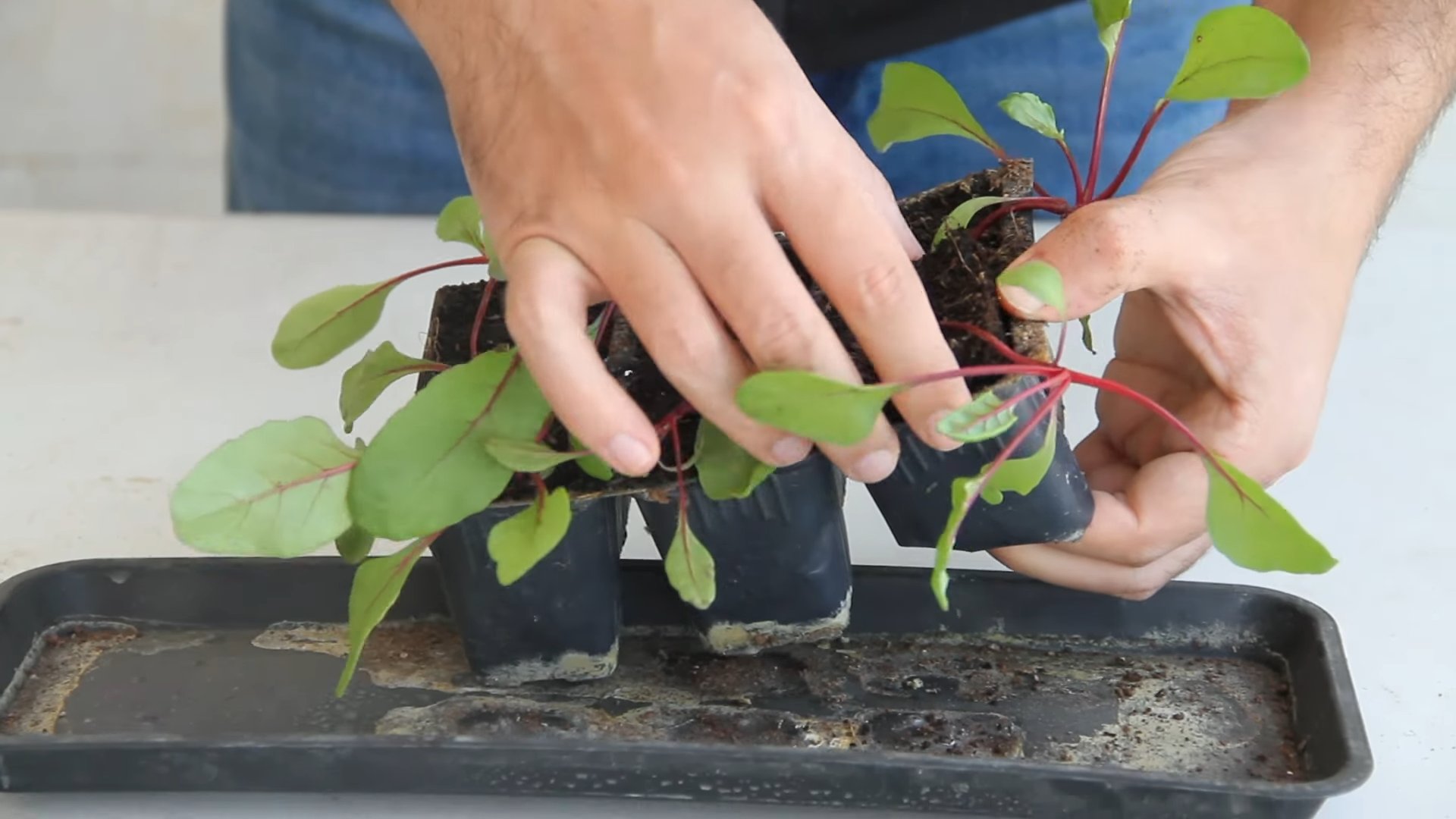
Conclusion
So, there you have it! Growing beets in containers isn’t just a possibility; it’s a surprisingly simple and rewarding experience. We’ve walked through the entire process, from selecting the right container and soil to nurturing your beet plants and harvesting those vibrant, earthy jewels. But why should you bother with this DIY project?
The answer is multifaceted. First, container gardening offers unparalleled flexibility. Whether you have a sprawling backyard or a tiny balcony, you can enjoy fresh, homegrown beets. Second, you have complete control over the growing environment. You can optimize the soil composition, water schedule, and sunlight exposure to create the perfect conditions for your beets to thrive. This often translates to healthier, more flavorful beets than you might find at the grocery store. Third, and perhaps most importantly, there’s an undeniable satisfaction that comes from nurturing a plant from seed to harvest. It’s a connection to nature, a mindful activity, and a source of fresh, delicious food all rolled into one.
This method of growing beets in containers is a must-try for anyone looking to add fresh, homegrown produce to their diet, regardless of their gardening experience.
But don’t stop there! Experiment with different beet varieties. Golden beets offer a milder flavor and vibrant color, while Chioggia beets boast beautiful concentric rings. You can also try companion planting. Marigolds can help deter pests, while chamomile can improve the overall health of your beet plants. Consider adding a slow-release fertilizer specifically formulated for root vegetables to boost your yield. Another variation is to succession plant. Sow seeds every few weeks to ensure a continuous harvest throughout the growing season. You can also grow beet greens separately for a constant supply of salad greens.
We’ve provided you with the knowledge and the tools; now it’s your turn to get your hands dirty. Don’t be afraid to experiment, learn from your mistakes, and most importantly, enjoy the process. We are confident that you will find the experience of growing your own beets in containers to be incredibly rewarding.
We encourage you to try this DIY trick and share your experience with us! Post pictures of your beet plants, share your tips and tricks, and let us know what you learned along the way. Your insights could help other aspiring container gardeners embark on their own beet-growing adventures. Let’s build a community of thriving container gardeners, one beet at a time!
Frequently Asked Questions (FAQ)
What is the best size container for growing beets?
The ideal container size for growing beets is at least 8-12 inches deep and 6-8 inches wide per plant. This allows enough room for the roots to develop properly. A larger container is always better, as it provides more space for root growth and helps retain moisture. If you’re planting multiple beets in one container, ensure there’s adequate spacing between them (about 3-4 inches) to prevent overcrowding. A good rule of thumb is to use a container that holds at least 5 gallons of soil for a few plants.
What type of soil is best for growing beets in containers?
Beets prefer well-draining, loose soil that is rich in organic matter. A good potting mix specifically formulated for vegetables is an excellent choice. You can also create your own mix by combining equal parts of potting soil, compost, and perlite or vermiculite. Avoid using garden soil, as it can be too heavy and compact, hindering root development. The soil pH should be slightly acidic to neutral, ideally between 6.0 and 7.0. Adding compost to your soil mix will provide essential nutrients and improve drainage.
How often should I water my container beets?
So, there you have it! Growing beets in containers isn’t just a possibility; it’s a surprisingly simple and rewarding experience. We’ve walked through the entire process, from selecting the right container and soil to nurturing your beet plants and harvesting those vibrant, earthy jewels. But why should you bother with this DIY project?
The answer is multifaceted. First, container gardening offers unparalleled flexibility. Whether you have a sprawling backyard or a tiny balcony, you can enjoy fresh, homegrown beets. Second, you have complete control over the growing environment. You can optimize the soil composition, water schedule, and sunlight exposure to create the perfect conditions for your beets to thrive. This often translates to healthier, more flavorful beets than you might find at the grocery store. Third, and perhaps most importantly, there’s an undeniable satisfaction that comes from nurturing a plant from seed to harvest. It’s a connection to nature, a mindful activity, and a source of fresh, delicious food all rolled into one.
This method of growing beets in containers is a must-try for anyone looking to add fresh, homegrown produce to their diet, regardless of their gardening experience.
But don’t stop there! Experiment with different beet varieties. Golden beets offer a milder flavor and vibrant color, while Chioggia beets boast beautiful concentric rings. You can also try companion planting. Marigolds can help deter pests, while chamomile can improve the overall health of your beet plants. Consider adding a slow-release fertilizer specifically formulated for root vegetables to boost your yield. Another variation is to succession plant. Sow seeds every few weeks to ensure a continuous harvest throughout the growing season. You can also grow beet greens separately for a constant supply of salad greens.
We’ve provided you with the knowledge and the tools; now it’s your turn to get your hands dirty. Don’t be afraid to experiment, learn from your mistakes, and most importantly, enjoy the process. We are confident that you will find the experience of growing your own beets in containers to be incredibly rewarding.
We encourage you to try this DIY trick and share your experience with us! Post pictures of your beet plants, share your tips and tricks, and let us know what you learned along the way. Your insights could help other aspiring container gardeners embark on their own beet-growing adventures. Let’s build a community of thriving container gardeners, one beet at a time!
Frequently Asked Questions (FAQ)
What is the best size container for growing beets?
The ideal container size for growing beets is at least 8-12 inches deep and 6-8 inches wide per plant. This allows enough room for the roots to develop properly. A larger container is always better, as it provides more space for root growth and helps retain moisture. If you’re planting multiple beets in one container, ensure there’s adequate spacing between them (about 3-4 inches) to prevent overcrowding. A good rule of thumb is to use a container that holds at least 5 gallons of soil for a few plants.
What type of soil is best for growing beets in containers?
Beets prefer well-draining, loose soil that is rich in organic matter. A good potting mix specifically formulated for vegetables is an excellent choice. You can also create your own mix by combining equal parts of potting soil, compost, and perlite or vermiculite. Avoid using garden soil, as it can be too heavy and compact, hindering root development. The soil pH should be slightly acidic to neutral, ideally between 6.0 and 7.0. Adding compost to your soil mix will provide essential nutrients and improve drainage.
How often should I water my container beets?
Beets need consistent moisture to thrive, especially during germination and early growth. Water deeply whenever the top inch of soil feels dry to the touch. Avoid overwatering, as this can lead to root rot. The frequency of watering will depend on the weather conditions, the size of your container, and the type of soil you’re using. During hot, dry periods, you may need to water daily. Check the soil moisture regularly and adjust your watering schedule accordingly. Using a moisture meter can be helpful in determining when to water.
How much sunlight do beets need?
Beets need at least 6 hours of direct sunlight per day to grow well. Choose a location that receives plenty of sunlight throughout the day. If you live in a hot climate, some afternoon shade can be beneficial to prevent the soil from drying out too quickly. If you don’t have access to a sunny spot, you can supplement with grow lights. Rotate your containers regularly to ensure that all sides of the plants receive adequate sunlight.
When is the best time to harvest my container beets?
Beets are typically ready to harvest 50-70 days after planting, depending on the variety. You can harvest them when the roots are about 1-3 inches in diameter. Gently loosen the soil around the beets and pull them out by the greens. You can also harvest the beet greens at any time, as long as you don’t remove too many at once, which can stunt the growth of the roots. Smaller beets tend to be more tender and flavorful.
What are some common pests and diseases that affect container beets?
Common pests that can affect container beets include aphids, flea beetles, and leaf miners. You can control these pests by handpicking them off the plants, using insecticidal soap, or introducing beneficial insects like ladybugs. Diseases that can affect beets include leaf spot and root rot. To prevent these diseases, ensure good air circulation, avoid overwatering, and use disease-resistant varieties. Regularly inspect your plants for any signs of pests or diseases and take action promptly.
Can I grow beets in containers during the winter?
In mild climates, you can grow beets in containers during the winter. Beets are relatively cold-hardy and can tolerate light frosts. However, in colder climates, you may need to protect your plants from freezing temperatures by moving them indoors or covering them with a frost blanket. Choose a variety that is known to be cold-hardy.
How do I prevent my beets from becoming woody?
Beets can become woody if they are allowed to grow too large or if they are stressed by lack of water or nutrients. To prevent this, harvest your beets when they are still relatively small (1-3 inches in diameter). Ensure that your plants receive consistent moisture and adequate nutrients. Adding compost to the soil can help improve its water-holding capacity and nutrient content.
Can I grow beets from seed in containers?
Yes, you can easily grow beets from seed in containers. Sow the seeds directly into the container about 1/2 inch deep and 1 inch apart. Keep the soil moist until the seeds germinate, which usually takes about 5-10 days. Once the seedlings emerge, thin them out to about 3-4 inches apart.
What are some good companion plants for beets in containers?
Good companion plants for beets in containers include onions, garlic, lettuce, spinach, and marigolds. Onions and garlic can help deter pests, while lettuce and spinach can provide ground cover and help retain moisture. Marigolds can attract beneficial insects and repel harmful ones. Avoid planting beets near beans or mustard, as they can inhibit their growth.

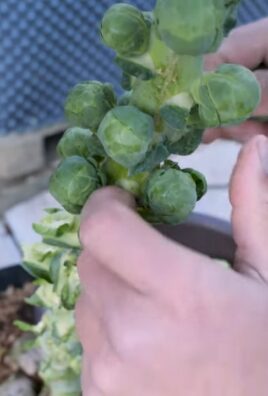
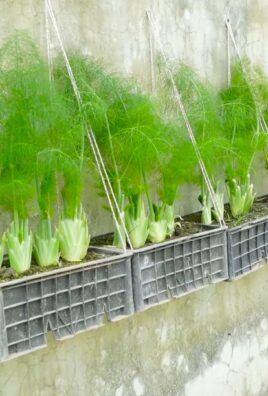
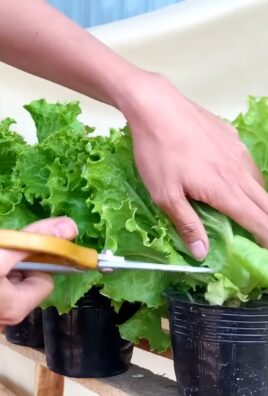
Leave a Comment